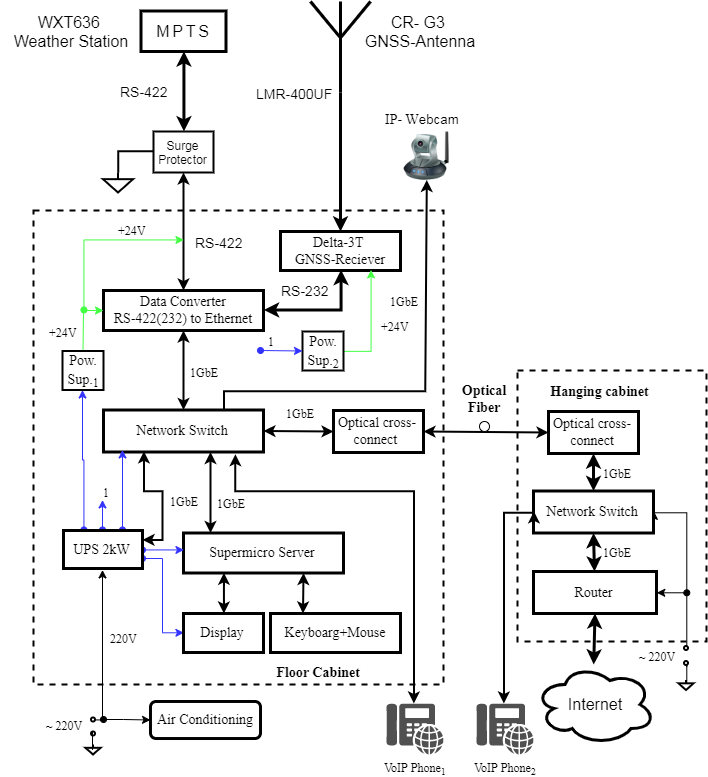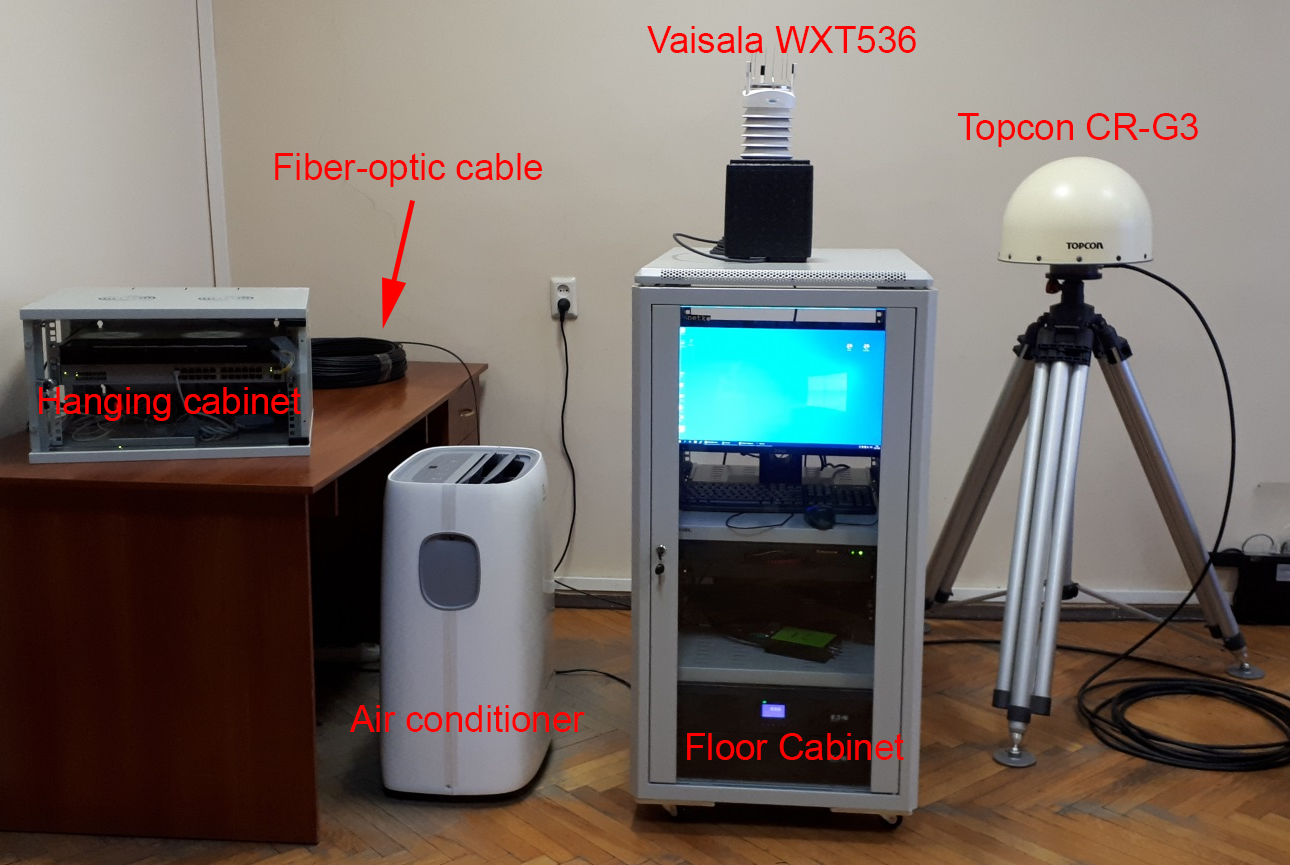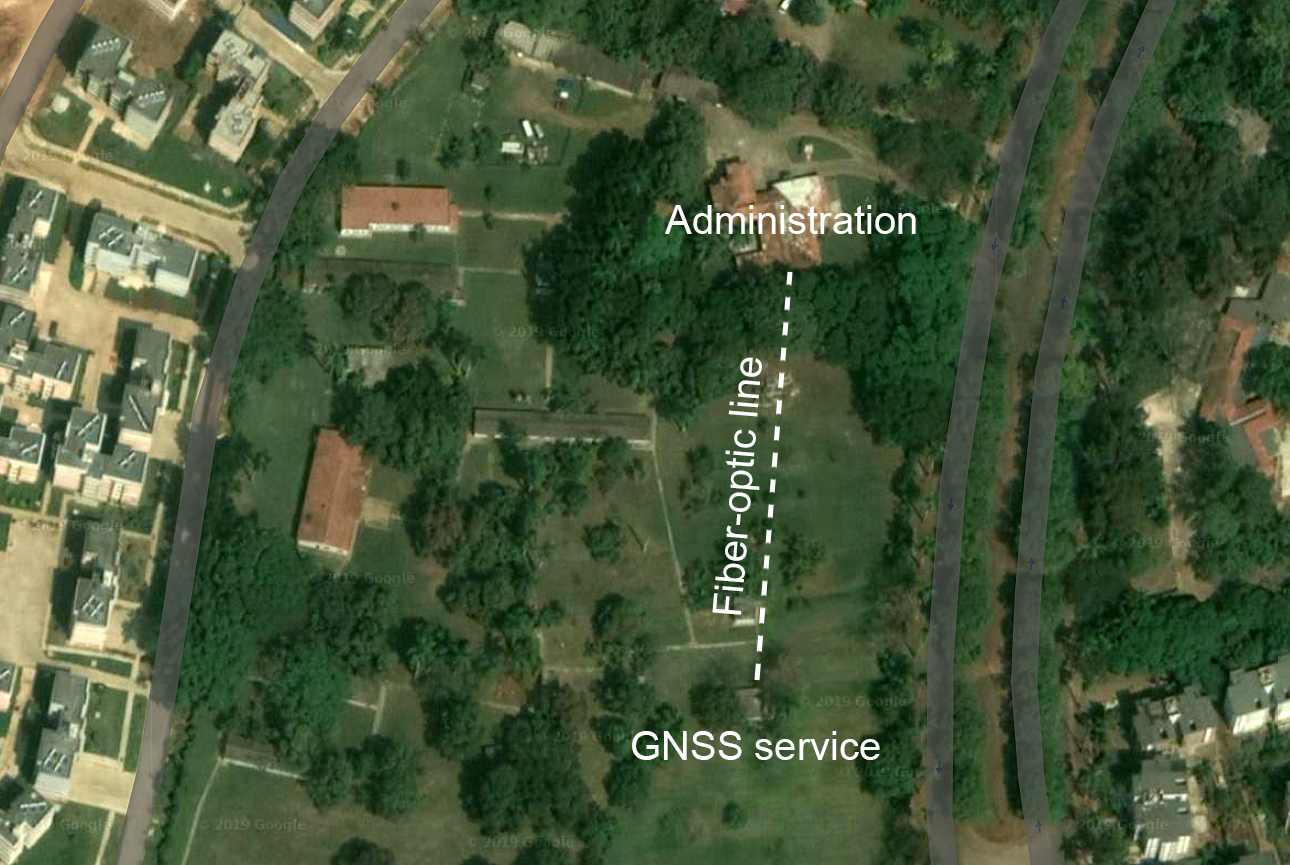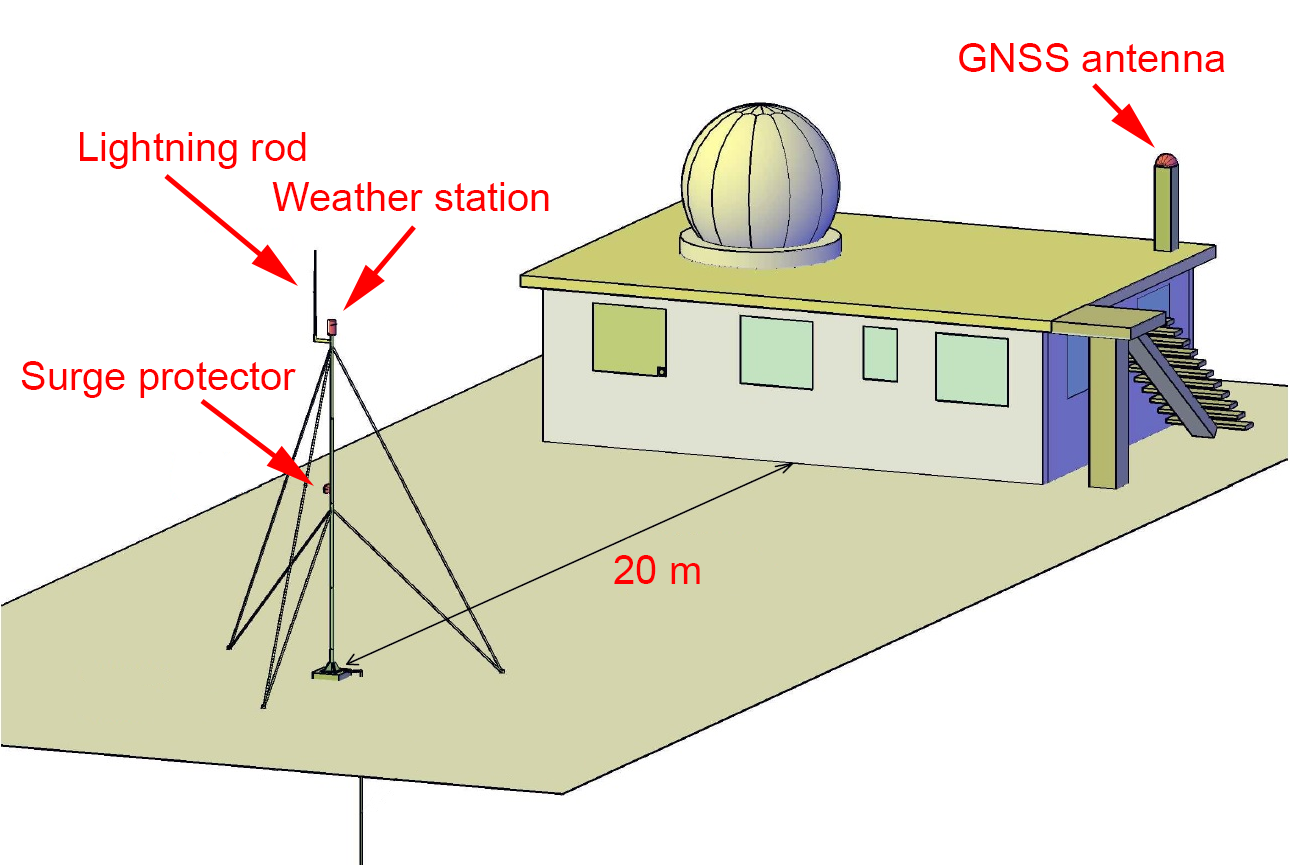Russian-Cuban co-located station
In 2019, the Institute of Applied Astronomy of the Russian Academy of Sciences (IAA) in cooperation with the Institute of Geophysics and Astronomy of the Republic of Cuba (IGA) began construction of the Russian-Cuban co-located station in Cuba. The main objective of this project is to improve the accuracy of the Russian network of the co-located stations through a significant improvement in geographical distribution. For the Republic of Cuba, the construction of this station will support the national reference frame at a modern high level of accuracy through joint processing of data from the stations of the Russian and global networks.
A typical station with co-located space-geodetic instruments (co-located station) includes different instruments implementing the following space geodesy techniques:
- Very long baseline radio interferometry (VLBI);
- Global navigation satellite systems positioning (GNSS);
- Satellite/Lunar laser ranging (SLR/LRR);
- Doppler Orbitography and Radiopositioning Integrated by Satellite (DORIS).
The co-located station is also equipped with a time and frequency standard, data storage and transmission equipment, a weather station and engineering support facilities. Also, a local geodetic network is being created on the site of co-located station for high-precision reference of instruments to the fundamental geodetic benchmark.
Station equipment
The GNSS service for monitoring and analysis of geophysical parameters will be organized based on the new Russian-Cuban co-located station. In order for the station to become a part of the international GNSS service (IGS), and the results of its observations could be used to solve space geodesy problems, it is necessary to ensure stable, compatible with each other determinations of station coordinates. To achieve these goals, the Russian-Cuban co-located station will be equipped to conduct high-precision GNSS and meteorological observations, as well as to implement all guidelines to the IGS sites.
The equipment of the Russian-Cuban co-located station can be divided into the following main components:
-
Topcon CR-G3 GNSS antenna is designed to receive signals from global navigation satellite systems (GPS, GLONASS, Galileo);
-
The automatic weather station Vaisala WXT536 measures meteorological parameters such as temperature, relative humidity, wind speed and direction, atmospheric pressure and precipitation;
-
Floor cabinet with installed Supermicro server, Javad Delta-3T GNSS receiver, UPS unit, network switch, optical cross-connect, interface converter, secondary power supply, monitor and input devices. This component is responsible for the collection, storage and transmission of data from measuring instruments;
-
Fiber-optic cable is used for high-speed noise-protected data transmission from a GNSS service server to an Internet access point;
-
Hanging cabinet with mounted network switch, optical cross-connect and router receives and transmits data from the local network of GNSS service to the Internet;
-
Floor air conditioner is designed to maintain a constant temperature and humidity in the GNSS service room;
-
VoIP-phones and IP-camera are designed for communication with GNSS service operator and remote visual control of equipment.



Station deasign
The Russian-Cuban co-located station will be located on the IGA site at Havana, La Lisa Municipality, 212. The equipment for data receiving and transmission is supposed to be installed in a hanging cabinet in the administrative building. The equipment will be connected to the 220 V electrical network and to the Internet through optical cross-connect and network controlled switch. A fiber-optic communication line is stretched from the administrative to the GNSS service building in a plastic pipe at a depth of 30-40 cm underground.


The GNSS service building is connected to a 220 V electrical network. The GNSS antenna is mounted on a platform at the top of the concrete pillar, on the roof of the GNSS service building. The anchor point of the platform with coordinates 23.069163 N and 82.459731 W will become the main reference point of the GNSS service, as well as part of the local geodetic network. The antenna is connected by a coaxial cable to the GNSS receiver located in a floor cabinet in the GNSS service room. The automatic weather station is mounted on a metal mast 4.5 meters high, located 20 meters south of the GNSS service building, equipped with a lightning rod and surge protection device and connected by a multi-core signal cable to the interface converter located in a floor cabinet. Cables are laid along walls, roofs and underground in plastic tubes to protect against UV radiation, rain and mechanical damage.

Practical results
The time series of observations of a co-located station allows obtaining local geophysical parameters that can be used in the implementation of global reference systems. This will make it possible to analyze changes in sea level and ocean load models and increase the accuracy of the predicted Earth orientation parameters (EOP).
The processing of GNSS observations of the Russian-Cuban co-located station will be carried out by high-precision software developed in IAA. The physical models and algorithms implemented in this software meet the standards recommended by the International Earth Rotation Service (IERS) and IGS. The standard mode of operation is the processing of GNSS phase and pseudorange measurements of the globally distributed network on a daily intervals. GNSS observations of the Russian network of co-located stations are also included in the processing.
The following parameters are estimated for each day of observation:
-
EOP (polar motion and length of day);
-
Coordinates of stations in terrestrial reference frame;
-
Satellite motion parameters (daily initial coordinates and velocities, Solar radiation pressure model coefficients);
-
Satellites and receivers clock biases;
-
Intersystem (GPS-GLONASS) receiver bias;
-
Local zenith tropospheric delays;
-
Local atmospheric asymmetry gradients;
-
Local total electronic content in ionosphere;
-
Float phase ambiguities.
Thus, a series of parameters is compiled for the whole observation interval, giving practical results:
-
The normal matrices of station positions and EOP for obtaining terrestrial reference frame and tectonic movements;
-
EOP series;
-
Series of zenith tropospheric delays;
-
Series of total electronic content in ionosphere;
-
GLONASS satellites ephemeris.
Current status
March 2020:
- Equipment of the co-located station assembled, adjusted and laboratory tested;
- At the IGA site the facilities for installation of the co-located station equipment prepared and the local geodetic network implemented;
- Design documentation for installation and connection of GNSS service equipment was developed at the IAA.
List of Publications
Related Links
Remarks
This work was supported by the Ministry of Science and Higher Education of the Russian Federation (project no. 05.613.21.0094).